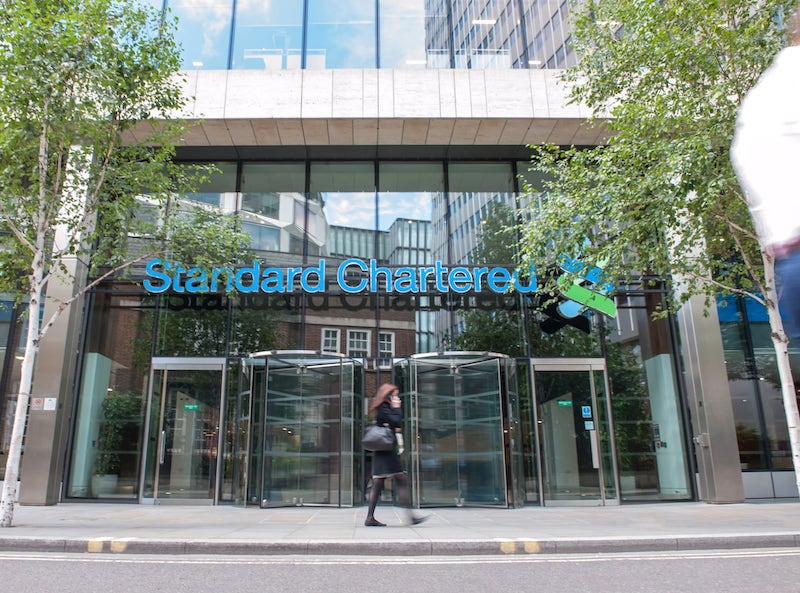Bank of England Highlights Higher Interest Rates Environment is Challenging for Households & Businesses to Service Debts, Vulnerabilities Due to Riskier Corporate Borrowing in Financial Markets Including Private Credit & Leveraged Lending
7th December 2023 | Hong Kong
Bank of England Financial Policy Committee (FPC) has highlighted higher interest rates environment is challenging for households & businesses to service debts, and vulnerabilities due to riskier corporate borrowing in financial markets including private credit & leveraged lending. Bank of England: “The overall risk environment remains challenging, reflecting subdued economic activity, further risks to the outlook for global growth and inflation, and increased geopolitical tensions. Long-term interest rates in the UK and US are now around their pre-2008 levels. The full effect of higher interest rates has yet to come through, posing ongoing challenges to households, businesses and governments, which could be amplified by vulnerabilities in the system of market-based finance … … The full impact of higher interest rates will take time to come through. Given the impact of higher and more volatile rates, and uncertainties associated with inflation and growth, some risky asset valuations continue to appear stretched. Credit spreads are broadly unchanged since Q3, with the exception of leveraged loan spreads which have widened a little. Some measures of equity risk premia remain compressed, particularly in the US.” On Global Vulnerabilities: “The adjustment to higher interest rates continues to make it more challenging for households and businesses in advanced economies to service their debts. Riskier corporate borrowing in financial markets, such as private credit and leveraged lending, appears particularly vulnerable. Although there are few signs of stress in these markets so far, a worsening macroeconomic outlook, for example, could cause sharp revaluations of credit risk. Higher defaults could also reduce investor risk appetite in financial markets and reduce access to financing, including for UK businesses. Some banks in a number of jurisdictions have been impacted by higher interest rates. They also remain exposed to property markets, including commercial real estate where prices in some countries have fallen significantly.” See Bank of England full statement below:
“ Bank of England Highlights Higher Interest Rates Environment is Challenging for Households & Businesses to Service Debts, Vulnerabilities Due to Riskier Corporate Borrowing in Financial Markets Including Private Credit & Leveraged Lending “
Bank of England Highlights Higher Interest Rates Environment is Challenging for Households & Businesses to Service Debts, Vulnerabilities Due to Riskier Corporate Borrowing in Financial Markets Including Private Credit & Leveraged Lending

6th December 2023 – The Financial Policy Committee (FPC) seeks to ensure the UK financial system is prepared for, and resilient to, the wide range of risks it could face – so that the system is able to absorb rather than amplify shocks, and serve UK households and businesses.
1) The overall risk environment
The overall risk environment remains challenging, reflecting subdued economic activity, further risks to the outlook for global growth and inflation, and increased geopolitical tensions. Long-term interest rates in the UK and US are now around their pre-2008 levels. The full effect of higher interest rates has yet to come through, posing ongoing challenges to households, businesses and governments, which could be amplified by vulnerabilities in the system of market-based finance. So far, and while the FPC continues to monitor developments, UK borrowers and the financial system have been broadly resilient to the impact of higher and more volatile interest rates.
2) Financial market developments
Current market pricing suggests that policy rates in the US, UK and euro area are at or near their peaks, and central banks have emphasised that they expect rates will need to remain at these levels for an extended period, in order to continue to address inflationary pressures. Returning inflation to target sustainably supports the FPC’s objective of protecting and enhancing UK financial stability.
Long-term interest rates are high and remain volatile in major advanced economies. Despite falling back somewhat since Q3, US long-dated government bond yields have risen since the July Financial Stability Report (FSR), with UK, euro area and Japanese long-term government bond yields following a similar pattern. Most of the recent upward move in US long-dated yields can be attributed to estimated term premia – the additional compensation that investors require to hold longer term rather than short-term bonds – which have increased from previously low levels. A number of factors could explain the rise in term premia across major advanced economies, including increased uncertainty around the longer-term economic outlook and interest rates, as well as evolving investor expectations of future supply and demand in government bond markets.
The full impact of higher interest rates will take time to come through. Given the impact of higher and more volatile rates, and uncertainties associated with inflation and growth, some risky asset valuations continue to appear stretched. Credit spreads are broadly unchanged since Q3, with the exception of leveraged loan spreads which have widened a little. Some measures of equity risk premia remain compressed, particularly in the US.
3) Global vulnerabilities
The adjustment to higher interest rates continues to make it more challenging for households and businesses in advanced economies to service their debts. Riskier corporate borrowing in financial markets, such as private credit and leveraged lending, appears particularly vulnerable. Although there are few signs of stress in these markets so far, a worsening macroeconomic outlook, for example, could cause sharp revaluations of credit risk. Higher defaults could also reduce investor risk appetite in financial markets and reduce access to financing, including for UK businesses.
- Some banks in a number of jurisdictions have been impacted by higher interest rates. They also remain exposed to property markets, including commercial real estate where prices in some countries have fallen significantly.
- High public debt levels in major economies could have consequences for UK financial stability, especially if market perceptions for the path of public sector debt worsen. The FPC will take into account the potential for these to crystallise other financial vulnerabilities and amplify shocks when making its assessment of the overall risk environment.
- Vulnerabilities in the mainland China property market have continued to crystallise, and significant downside risks remain. This could lead to broader stresses in other sectors of the mainland Chinese economy, and materially affect Hong Kong. The results of the 2022/23 annual cyclical scenario indicated that major UK banks would be resilient to a severe global recession that included very significant falls in real estate prices in mainland China and Hong Kong.
Geopolitical risks have increased following the events in the Middle East, increasing uncertainty around the economic outlook, particularly with respect to energy prices. If these risks crystallised, resulting in significant shocks to energy prices, for example, this could impact on the macroeconomic outlook in the UK and globally, as well as increasing financial market volatility.
4) UK household and corporate debt vulnerabilities
Since the July FSR, household income growth has been greater than expected. This has reduced the share of households with high cost of living adjusted debt-servicing ratios, and a lower expected path for Bank Rate has reduced the extent to which that share is projected to rise. Nevertheless, household finances remain stretched by increased living costs and higher interest rates, some of which has yet to be reflected in higher mortgage repayments. Arrears for secured and unsecured credit remain low but are rising as the impact of higher repayments is felt by borrowers.
In aggregate, UK corporates’ ability to service their debts has improved due to strong earnings growth and the sector is expected to remain broadly resilient to higher interest rates and weak growth. But the full impact of higher financing costs has not yet passed through to all corporate borrowers, and will be felt unevenly, with some smaller or highly leveraged UK firms likely to remain under pressure. Corporate insolvency rates have risen further but remain low.
5) UK banking sector resilience
The UK banking system is well capitalised and has high levels of liquidity. It has the capacity to support households and businesses even if economic and financial conditions were to be substantially worse than expected. The overall risk environment remains challenging, however, and asset performance deteriorated among some loan portfolios in Q3. Some forms of lending, such as to finance commercial real estate investments, buy-to-let, and highly leveraged lending to corporates – as well as lenders that are more concentrated in those assets – are more exposed to credit losses as borrowing costs rise.
- Aggregate net lending remains subdued, driven by reduced demand for credit and a tightening in banks’ risk appetites. The tightening in credit conditions over the past two years appears to have reflected the impact of changes to the macroeconomic outlook, rather than defensive actions by banks to protect their capital positions.
- There is some evidence that net interest margins (NIMs) have peaked. The aggregate profitability of the major UK banks is nevertheless expected to remain robust, with NIMs expected to remain higher than in recent years when Bank Rate had been close to the effective lower bound, and similar to levels seen before the global financial crisis when Bank Rate was comparable to its current level.
- Alongside the higher risk-free interest rate environment, a number of system-wide factors are likely to affect funding and liquidity conditions in the UK banking sector over the coming years, including as central banks normalise their balance sheets. Those factors will affect sources of bank funding and could affect their cost – for example through continued competition for deposits and greater use of some forms of wholesale funding. Banks will need to factor these system-wide trends into their liquidity management and planning over the coming years.
The impact on individual banks will depend, amongst other things, on their funding structure and business model. Banks have a range of ways in which they can adjust to changing trends in funding and liquidity, including through their mix of funding and liquid assets, and through the nature, quantity, and pricing of lending they undertake. The FPC will monitor the implications of these trends for financial stability.
6) The UK countercyclical capital buffer rate decision
The FPC is maintaining the UK countercyclical capital buffer (CCyB) rate at its neutral setting of 2%. The FPC will continue to monitor developments closely and stands ready to vary the UK CCyB rate, in either direction, in line with the evolution of economic and financial conditions, underlying vulnerabilities, and the overall risk environment.
7) The resilience of market-based finance
Vulnerabilities in certain parts of market-based finance remain significant, and in some sectors have increased since the July FSR. Funds investing in riskier corporate credit have seen outflows. Hedge fund net short positioning and asset managers’ leveraged net long positions in US Treasury futures have also increased further, which could contribute to market volatility if hedge funds needed to unwind their positions rapidly. While the financial system has so far been broadly resilient to the higher interest rate environment, vulnerabilities in market-based finance could crystallise in the context of higher and more volatile interest rates or sharp movements in asset prices, leading to dysfunction in core markets and amplifying any tightening in credit conditions.
Alongside international policy work led by the Financial Stability Board, the UK authorities are also working to reduce vulnerabilities domestically where this is effective and practical. The FPC welcomes proposals by UK authorities to increase the resilience of UK-based money market funds, which have been published today.
In November, the Bank released the hypothetical scenario for its system-wide exploratory scenario (SWES) exercise. The SWES will assess the behaviours of banks and non-bank financial institutions during stressed financial market conditions, and how they might interact to amplify shocks to markets core to UK financial stability. Under the stress scenario, participating firms will model the impact of a shock that is faster, wider ranging and more persistent than those observed in recent events in financial markets.
Sign Up / Register
Caproasia Users
- Manage $20 million to $3 billion of assets
- Invest $3 million to $300 million
- Advise institutions, billionaires, UHNWs & HNWs
Caproasia Platforms | 11,000 Investors & Advisors
- Caproasia.com
- Caproasia Access
- Caproasia Events
- The Financial Centre | Find Services
- Membership
- Family Office Circle
- Professional Investor Circle
- Investor Relations Network
Monthly Roundtable & Networking
Family Office Programs
The 2025 Investment Day
- March - Hong Kong
- March - Singapore
- July - Hong Kong
- July - Singapore
- Sept- Hong Kong
- Sept - Singapore
- Oct- Hong Kong
- Nov - Singapore
- Visit: The Investment Day | Register: Click here
Caproasia Summits
- The Institutional Investor Summit
- The Investment / Alternatives Summit
- The Private Wealth Summit
- The Family Office Summit
- The CEO & Entrepreneur Summit
- The Capital Markets Summit
- The ESG / Sustainable Investment Summit



































